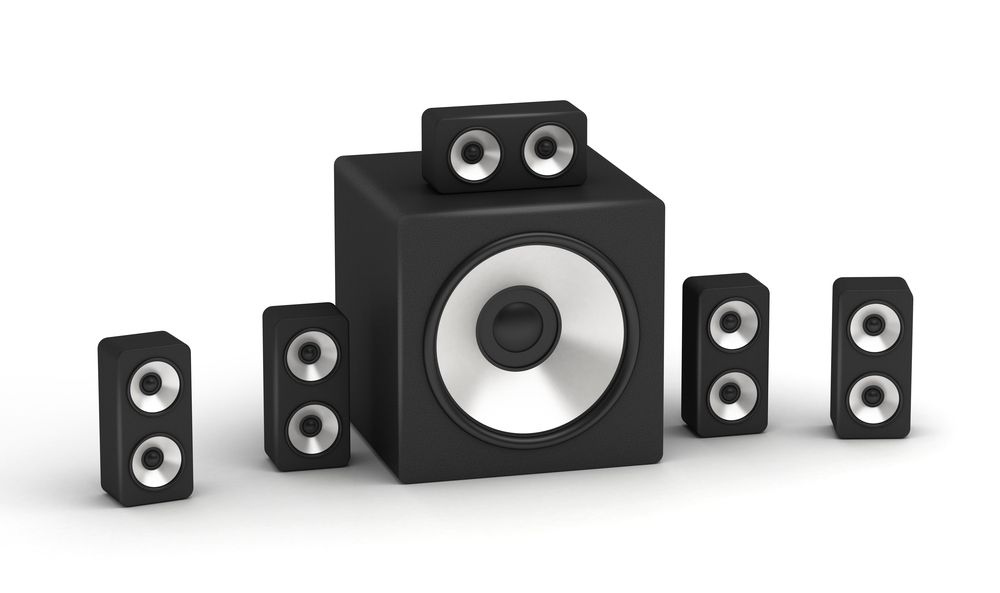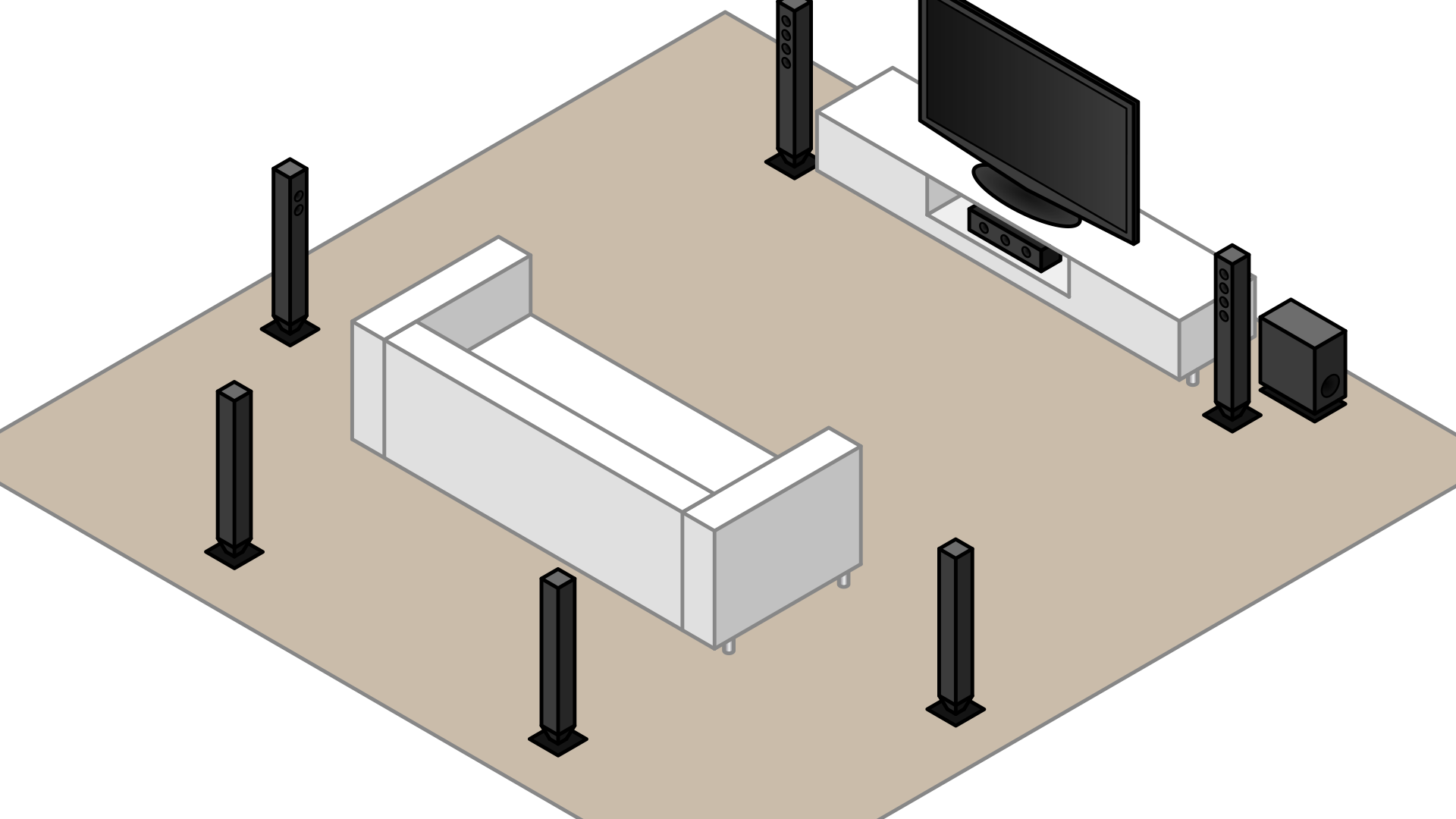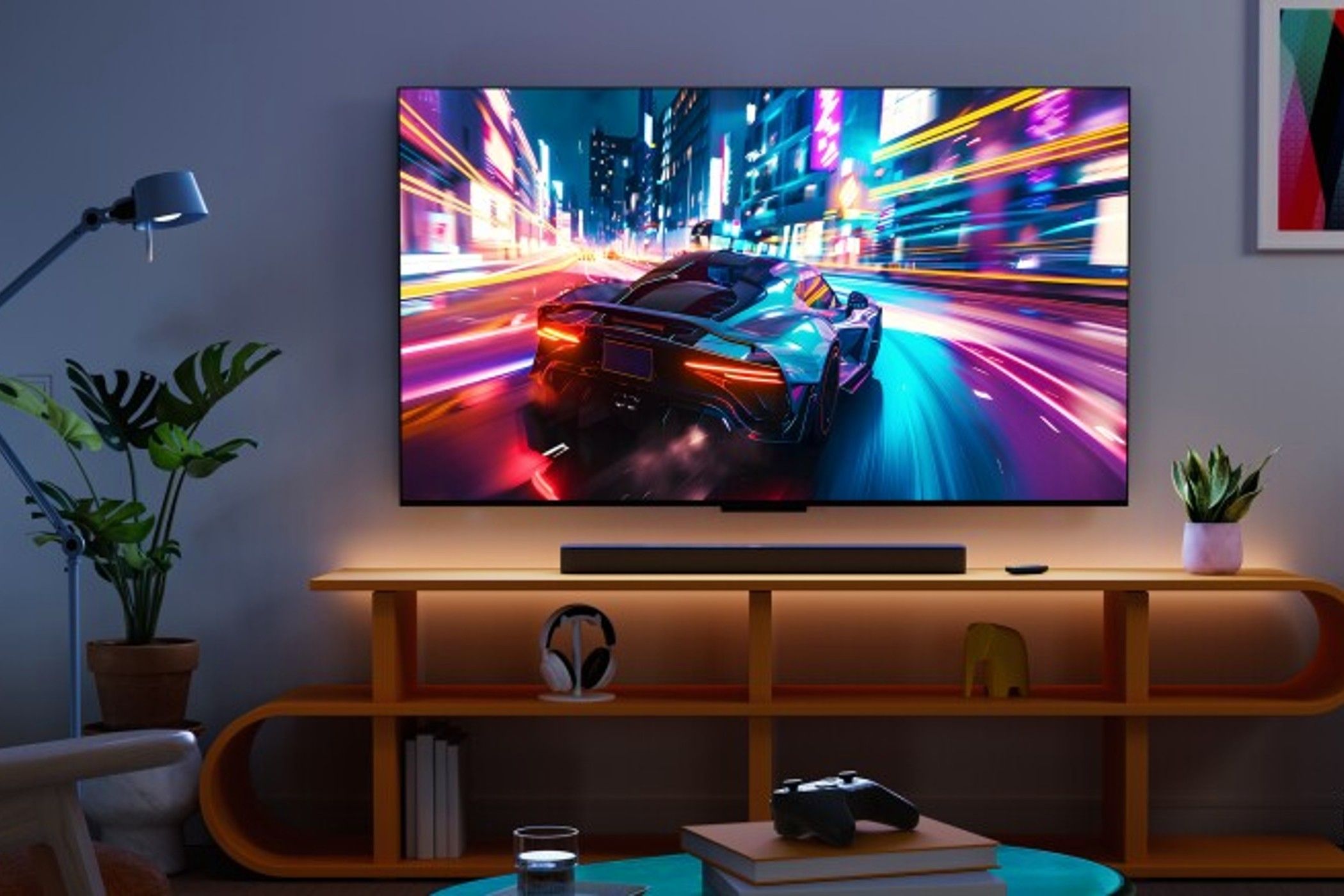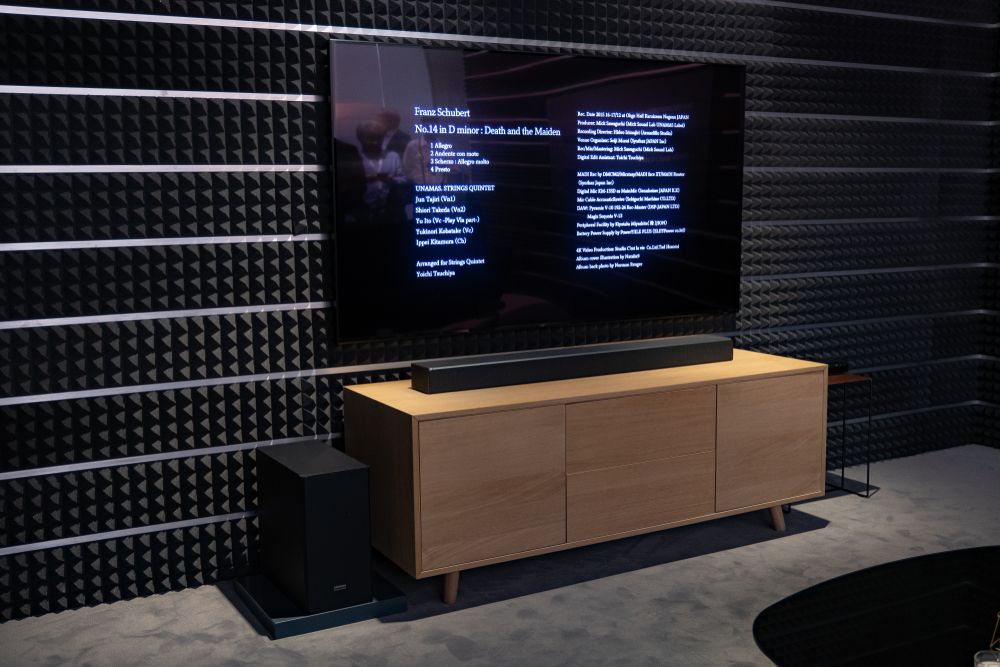Summary
- Full home theater systems with surround sound reign supreme for immersive, detailed audio.
- Soundbars struggle with directionality but are great for minimalist setups in small spaces.
- If you prioritize immersive experiences and have the space and patience to set it up, opt for a full home theater.
When it comes to upgrading your TV’s sound, the choice often boils down to two contenders: a space-saving soundbar or a room-filling home theater system. But how close are these two options performance-wise?
Full Home Theater Sound Systems Reign Supreme
This supremacy all boils down to surround sound. A traditional home theater system typically comes with an AV receiver and at least five speakers working together in harmony. You’ve got a center channel speaker that handles dialogue, left and right front speakers for the main audio, left and right rear speakers for surround sound effects, and, of course, a subwoofer to deliver the kind of bass that makes explosions feel like explosions. This classic 5.1 setup doesn’t just play sound—it surrounds you with it.
If you’re feeling ambitious (and maybe a little extra), you can level up to setups like 7.1 or even the downright bonkers 7.1.4 configuration. A 7.1 system adds side speakers for even more depth, while the 7.1.4 rig comes with four overhead (ceiling) speakers that deliver sounds from above, creating an epic, 3D audio experience.
This multichannel setup creates a soundstage, where audio isn’t just heard; it’s also felt. You hear the raindrops falling behind you, the footsteps creeping to your left, and the roar of a spaceship as it zooms overhead that you even duck.
Besides, soundbars face physical limitations that traditional speakers simply don’t. Hofmann’s Iron Law—a principle of speaker design—summarily tells us that you can’t get big, powerful sounds out of small speakers. Soundbars are limited by their compact size, and their smaller drivers mean that they are likely to struggle to produce the full range of sound, particularly at higher volumes.
You will especially notice this during action-packed scenes where you want to feel every explosion, roar, and musical swell. A good home theater system, with its larger speakers and dedicated amplifiers, handles this with ease, delivering sound that’s not only louder but also richer and more detailed.
Can Soundbars Recreate Surround Sound Effectively?
One of the biggest hurdles for soundbars is directionality. When an audio engineer mixes a film, they use the spatial arrangement of speakers to position each sound in the room carefully. A creaky floorboard might come from your left while a character’s voice echoes from behind you to create a sense of presence, as though you’re right there in the scene.
High-end soundbars try to work around this with advanced technology like angled drivers and psychoacoustic effects designed to “throw” sound into the room. The sound waves then bounce off your walls and ceiling to create the illusion of surround audio—even though all the speakers are right in front of your TV.
In the right room, this can work surprisingly well. If you’re sitting in a relatively small to medium-sized space with four walls (not open to another room), you may likely notice sounds that appear to come from behind or above you. While this can feel impressive at first, once you notice the illusion, it’s hard to unhear it.
When Does a Soundbar Make Sense to Invest In?
If you value minimalism or don’t want to deal with the hassle of multiple speakers, tangled wires, or a complicated installation process, a soundbar is an easy win. Most models come as a single bar unit (or with an additional wireless subwoofer) that you can plug in, connect to your TV, and enjoy within minutes. You wouldn’t need to rearrange your furniture or treat your room.
They’re also a great choice for smaller spaces. If you live in an apartment, dorm room, or a home where the living room doubles as your dining room and office, a full home theater system might feel like overkill. Soundbars are compact but still pack a punch, especially ones with Dolby Atmos or DTS:X, which can mimic a sense of depth and immersion to some extent. And that’s provided it’s a small space.
However, if you’ve got a fairly large space, but maybe you’ve got kids running around or a dog that may think speaker wires are chew toys (except you’ve got the budget for wireless or wall-mounted options), a soundbar might be the perfect compromise in this.
Lastly, it’s worth considering your budget. Building a full home theater system can get expensive fast—especially when you factor in the cost of a receiver, multiple speakers, subwoofers, and all the cables and mounts you’ll need. A soundbar, on the other hand, offers a much more accessible price point.
When Should You Opt for a Full Home Theater?
If you have a large space (of at least 24 ft X 15 ft), go for a full home theater. But there’s a small caveat here: you’ll need the patience to set everything up and also have to be familiar with concepts like acoustic treatment and speaker placement. While none of this is rocket science, it does require more involvement than simpler solutions.
They also shine if you love hosting movie nights, sports watch parties, or gaming sessions. Friends who normally stream everything on laptops suddenly want to come over for film clubs and series premieres. If you invite friends over to watch a big game after setting up a home theater, the cheers, and commentary coming from all around you will make it feel like you are right there in the stadium.
A full home theater isn’t for everyone. If you’re tight on space, budget, or time, a soundbar can still deliver a great experience. But if you want to feel like you’re sitting in a movie theater, standing in the middle of a concert, or dropped into the world of your favorite video game, a home theater system is unmatched.




